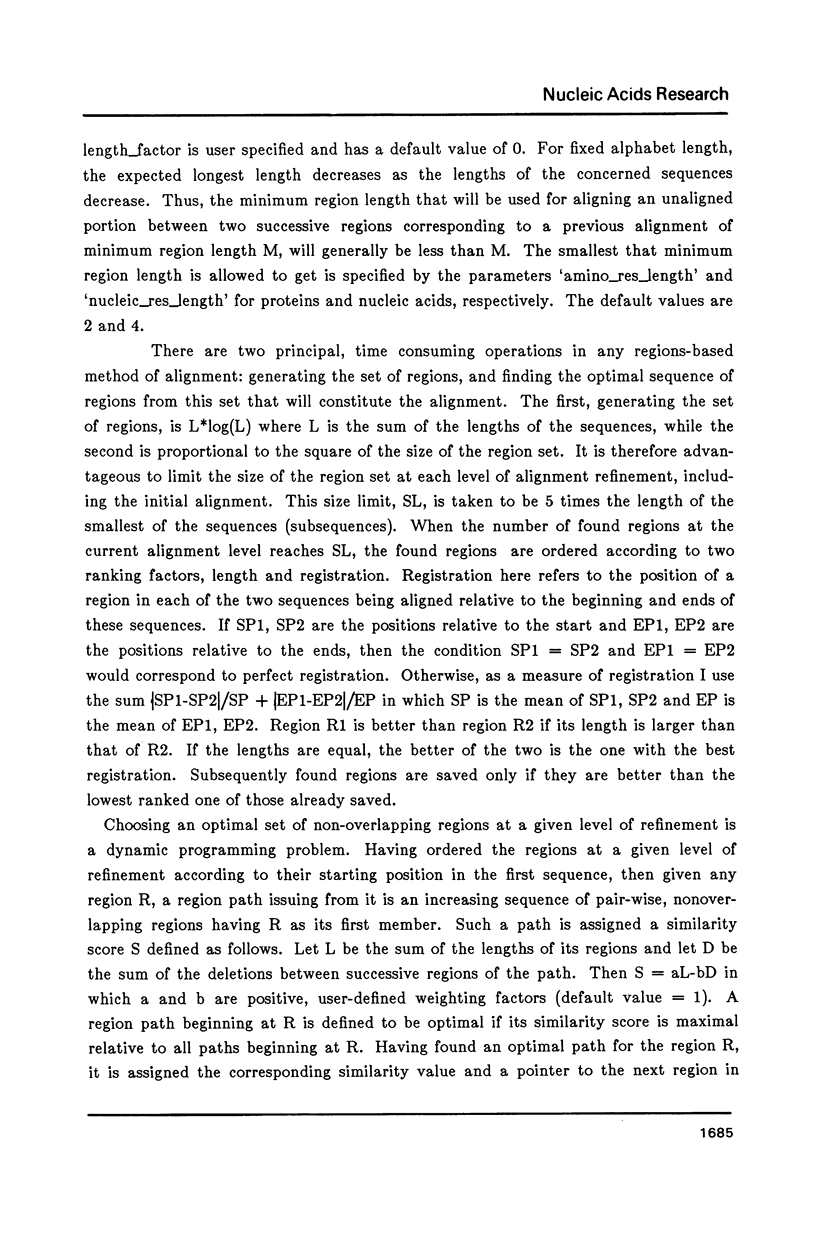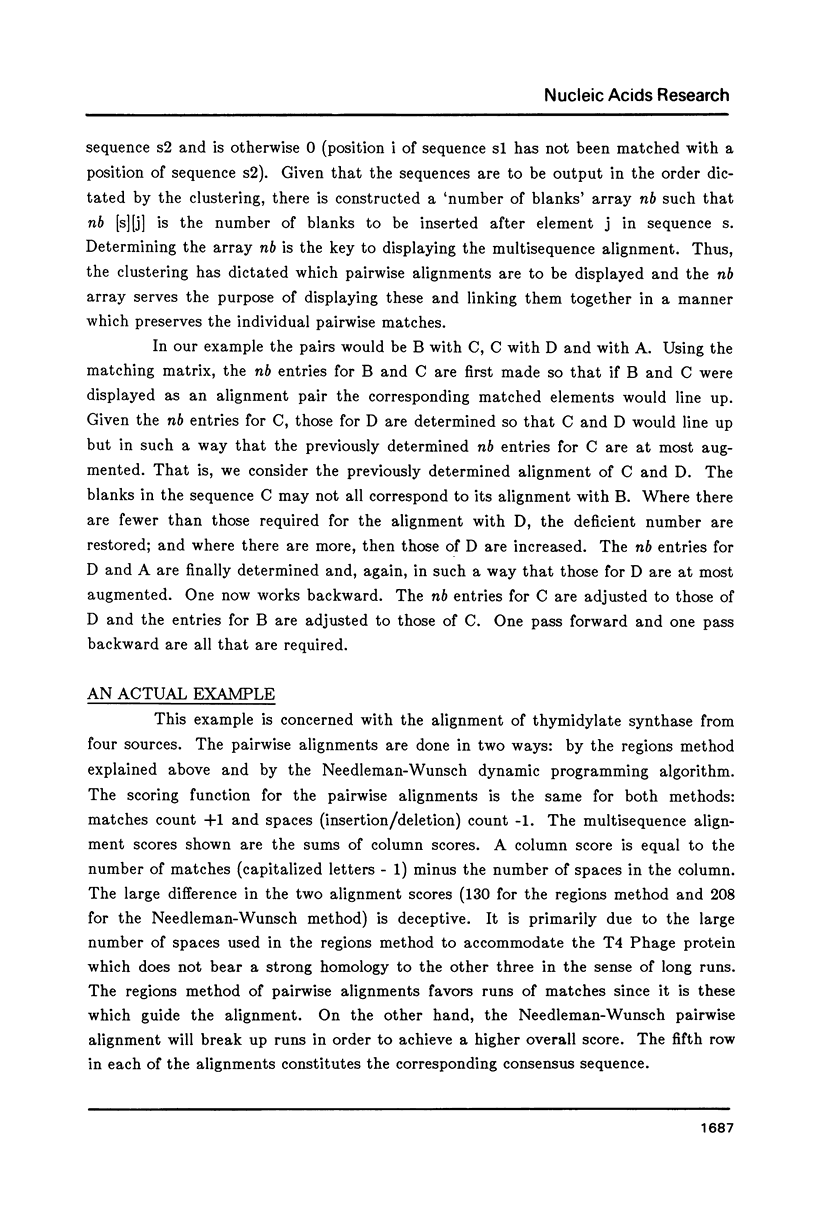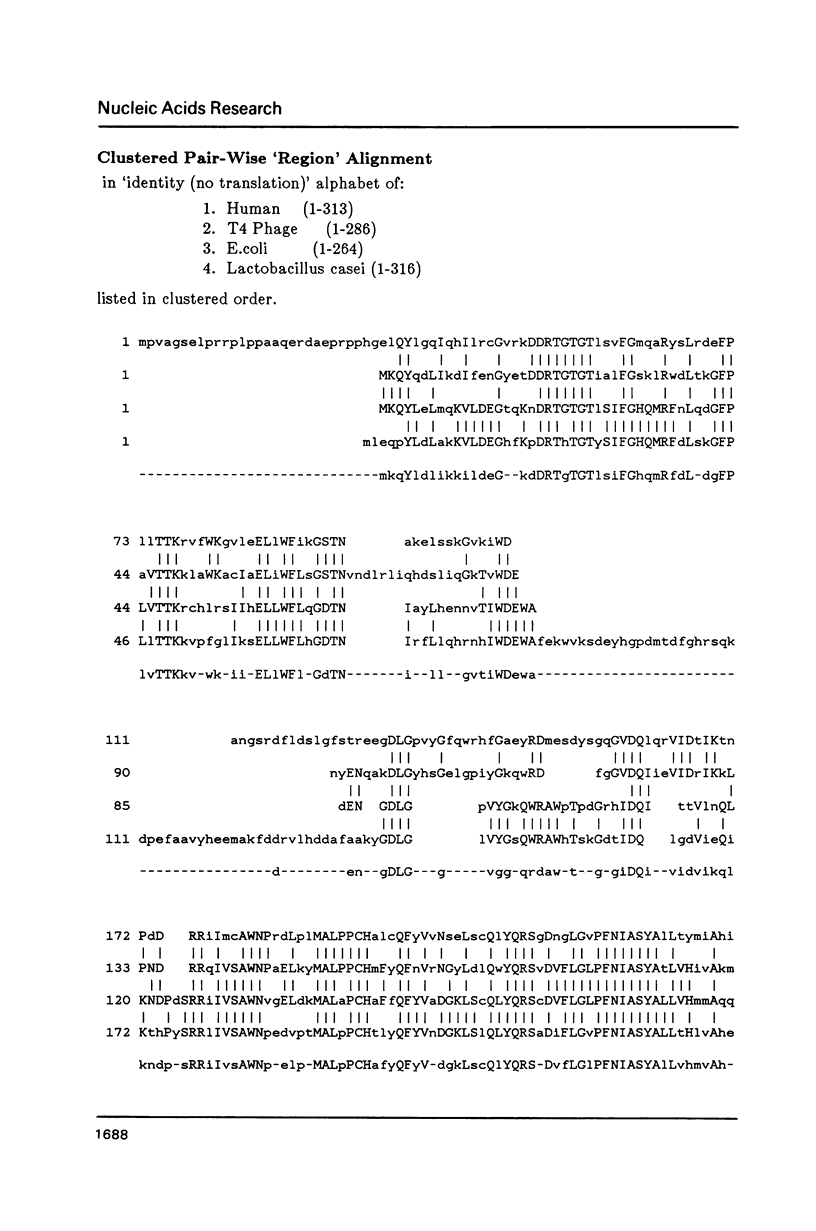Abstract
The 'regions' method for multisequence alignment used in the previously reported program MALIGN has been generalized to include recursive refinement so that unaligned portions between two regions at the current level of resolution can be handled with increased resolution. Additionally, there is incorporated a limiting of the number of regions to be used at any level of resolution from which to abstract an alignment. This provides a significant increase in speed over the unlimited version. The program GENALIGN uses this improved regions method to execute fast pairwise alignments in the framework of Taylor's multisequence alignment procedure using clustered pairwise alignments. Pairwise alignments by dynamic programming are also provided in the program.
Full text
PDF








Selected References
These references are in PubMed. This may not be the complete list of references from this article.
- Martinez H. M. An efficient method for finding repeats in molecular sequences. Nucleic Acids Res. 1983 Jul 11;11(13):4629–4634. doi: 10.1093/nar/11.13.4629. [DOI] [PMC free article] [PubMed] [Google Scholar]
- Needleman S. B., Wunsch C. D. A general method applicable to the search for similarities in the amino acid sequence of two proteins. J Mol Biol. 1970 Mar;48(3):443–453. doi: 10.1016/0022-2836(70)90057-4. [DOI] [PubMed] [Google Scholar]
- Sobel E., Martinez H. M. A multiple sequence alignment program. Nucleic Acids Res. 1986 Jan 10;14(1):363–374. doi: 10.1093/nar/14.1.363. [DOI] [PMC free article] [PubMed] [Google Scholar]
- Taylor W. R. Multiple sequence alignment by a pairwise algorithm. Comput Appl Biosci. 1987 Jun;3(2):81–87. doi: 10.1093/bioinformatics/3.2.81. [DOI] [PubMed] [Google Scholar]


